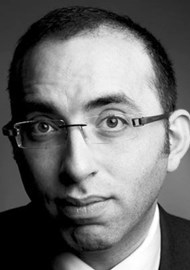A variety of methods exist to assess the nasal septum, often dependent of the healthcare resources available, and whether there is a specific pathology affecting the function of the nose. The authors present a small series of patients presenting with probable traumatic deformity of the nasal bones and / or septum. All patients received the same preoperative investigations used to stratify the septal deformity: direct nasal speculoscopy, CT-scan with 3D reconstruction and nasendoscopy. The deformities were grouped according to a modified Guyuron classification and the surgeon and radiologist who interpreted these index tests were blinded to each other’s results. Ultimately, preoperative assessment was compared to the reference standard of the intraoperative findings, but it is unclear whether the same surgeon who carried out preoperative assessments also performed the surgery. If so, this is a major source of bias. The cohort, although small, was mainly composed of males, which is probably representative of the groups of patients that generally seek septal surgery. Craniofacial CT had a very high diagnostic performance for type A deformities, which are typically more subtle septal deformities that in the experience of many, do not carry significant morbidity. However, nasendoscopy demonstrated much better performance when diagnosing type B and C deformities. These deformities make up the bulk of patients seeking an opinion on nasal function secondary to trauma and more frequently require surgical correction to improve function. The authors recognise CT-scanning patients is resource intensive in the majority of healthcare settings and reasonably acknowledge nasendoscopy overall is probably better. A small sample size and inability to compare the sub-groups accurately does hamper finite conclusions, but it interesting to know CT-scanning does not add much to a sensitive test such as nasendoscopy, which is widely available in many rhinology services. Moreover, 3D reconstructions, which are often useful in midface reconstruction, did not help interpretation of the septal deformity. This may be software and operator dependent. It may have been interesting to have more than one radiologist interpreting the images to comment further on this unexpected result and this may be an area of future study.




